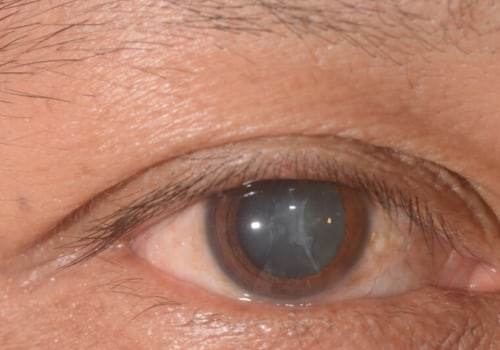Cataracts are a common eye condition that can cause vision loss and blurriness. Fortunately, cataract surgery is a safe and effective way to restore vision. There are several different types of cataract surgery, each with its own advantages and disadvantages. In this article, we'll discuss the different options for cataract surgery, including traditional cataract surgery, laser-assisted cataract surgery, phacoemulsification, femtosecond laser-assisted cataract surgery (FLACS), extracapsular cataract extraction, monovision, and toric intraocular lenses.
We'll also discuss the latest advances in cataract surgery and how to choose the right lens for you. In traditional
cataract surgery
, the eye surgeon uses a thin blade to make incisions in the eye, removes the cataract and replaces it with an artificial lens. This type of surgery is still used in some cases, but it is becoming less common due to the availability of more advanced techniques. In laser-assisted cataract surgery, the surgeon uses a laser to make the incisions, allowing for greater precision and safety. It's important to note that your insurance plan may not cover certain options, such as multifocal lenses, EDOF and toric lenses, as well as laser surgery. Phacoemulsification is by far the most common type performed in the developed world, with less adoption of FLACS.This procedure involves using a high-frequency ultrasound to break up the cataract into small pieces. You may be offered femtosecond laser-assisted cataract surgery (FLACS). There is evidence that FLACS may be better for mature and advanced cataracts, resulting in a lower use of phacoemulsification energy. There is also a third option, extracapsular cataract extraction, which is valuable in some cases of mature cataracts, as well as difficult procedures in which phacoemulsification is riskier or not possible. During preoperative consultations, your surgeon should be able to identify what type of cataract surgery is right for you and help you choose the best course of action. If patients undergo cataract surgery on both eyes at the same time, they have additional lens options for cataract surgery when it comes to monofocal lenses.
Specifically, they can choose to have both IOLs configured for the same distance, or they can choose to have one lens adapted to near vision and the other to distance vision. This last option has been called “monovision”. A small percentage of patients have difficulty adapting to these lenses and, for that reason, may have problems with slightly blurred vision. Patients with multifocal lenses are also more likely to have problems with glare and light halos while driving at night. The thoric intraocular lens for astigmatism is used to help correct astigmatism, as well as to replace the lens after cataract surgery.
Cataract surgery Lens options for astigmatism are relatively new and are often applied in combination with relaxing limbal incisions (incisions that help correct abnormalities in the curvature of the eye). Toric lenses are usually monofocal lenses, although multifocal versions are available. When weighing the pros and cons of intraocular lens implants, you'll need to consider your particular visual needs and desires. For example, if you really want to increase your chances of being able to live independently of glasses, you might want to opt for multifocal lenses. But if you often drive at night, you might want to avoid multifocal lenses.
In the end, everyone's eye focusing ability is different, so it's best to talk to your doctor about lens options for cataract surgery and, if possible, even try them before surgery. One of the most recent advances in cataract surgery includes a technology called ORA (Optiwave Refractive Analysis), which is a kind of intraoperative aberrometry, a tool that surgeons can use to take refractive measurements in the operating room, with the aim of providing optimal power and placement of lenses. There are different types of cataracts and depending on the type you have they may be more suitable for one type of surgery or another. The basic cataract procedure will improve vision for patients with visually significant cataracts. Regardless of how your cataracts developed if you have them and they interfere with your daily activities you should surgically remove them. Even though cataract surgeries are common you should look for an experienced surgeon who will make the process stress-free. Yes you can change your cataract lenses after cataract surgery although the need to do so is extremely rare.
If you're interested in monovision your ophthalmologist may recommend that you try monovision with contact lenses before cataract surgery. Some of the most recent advances in cataract surgery can help patients with their general vision problems such as nearsightedness farsightedness astigmatism and presbyopia (the loss of the ability to shift focus from far vision to reading vision).



